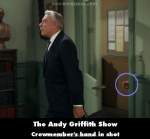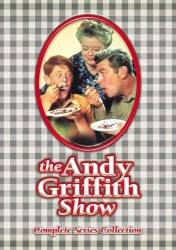
Visible crew/equipment: At the start, just as Mr. Hampton walks into the office and pushes the door closed, we can see a crew member's hand reaching through the doorway to help close the door. (00:00:55)
Continuity mistake: When Helen and Howard are talking about the lack of funds for the school play Andy comes up with a solution, and as Helen walks up the street there's a brick wall adjacent to the grocery store window which shouldn't be there (shot on the studio soundstage not the backlot). (00:07:05)






Answer: As noted in the previous answers, in real life, things like this provided wind and/or rain deflection, and also maintained a bit of privacy when blinds were raised somewhat. The interior courthouse set was located in the studio, so the "outside" Main Street didn't exist. I believe these things were added to the courthouse windows for practicality, to avoid some crew movement being visible on the opposite side of those windows. These are not "window boxes" to hold anything, as they're actually bottomless; we can see the Venetian blind's long pull cords under them. They're made of plywood and simple to build, so the "material and labor" was inexpensive. Similar variations made of different materials are in other movies/shows. In 1957's "12 Angry Men," textured chicken wire glass panels are in the jury room windows, and in "Jesse Stone: Night Passage" another type is in Jesse's office windows.
Super Grover ★